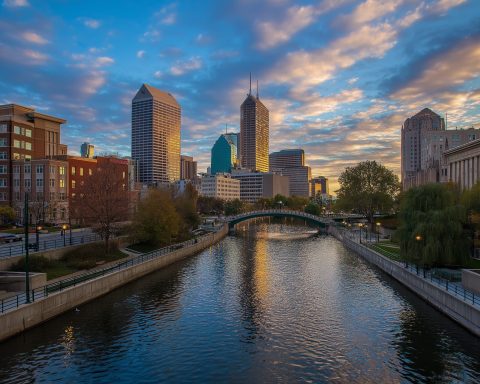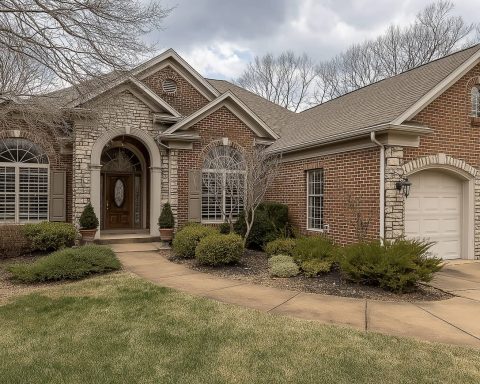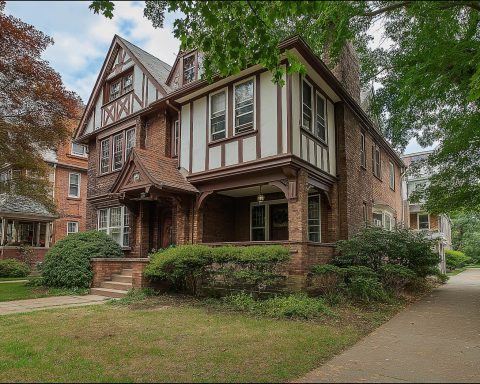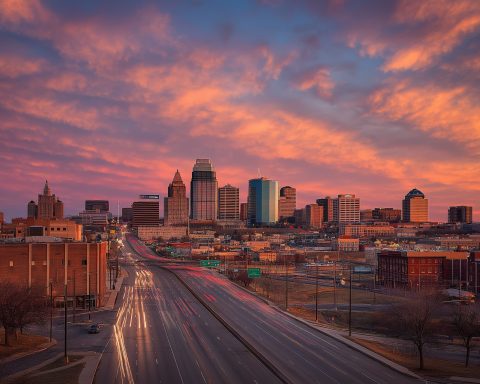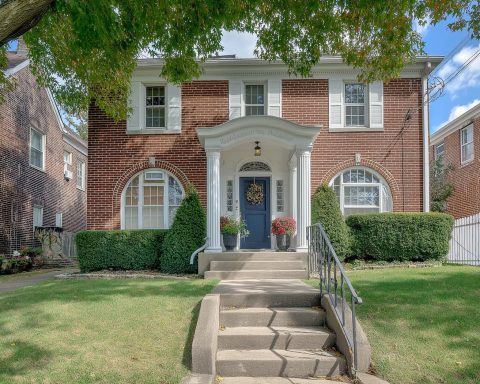- Red-Hot Housing Market: Indianapolis is ranked as the #2 hottest U.S. housing market for 2025 (only behind Buffalo) due to strong price growth and tight supply axios.com. Zillow forecasts Indy home values to rise ~3.4% in 2025, up from 2.8% in 2024 axios.com, as high demand meets limited inventory axios.com.
- Surging Home Prices & Sales: The median home price in the Indianapolis metro area is in the low $300Ks, up ~5% year-over-year indianarealtors.com. Within the city, the typical home value (~$223K) remains well below the U.S. average (~$357K) axios.com, underscoring Indy’s affordability advantage. Sales activity is brisk – homes spend just over a month on market on average, with sales volumes slightly up (~6% YoY) in 2025 reddoorrents.com.
- Tight Supply, Seller’s Market: Housing inventory has expanded from last year (+23% YoY in April) but is still below pre-pandemic norms (15% fewer listings than April 2019) indianarealtors.com. Buyer demand outpaces supply, keeping Indianapolis a seller’s market with competition high getindiana.com axios.com. Buyers from higher-cost cities are flocking to Indy for its low cost of living, boosting demand for starter homes and downsizing properties alike wrtv.com.
- Rental Market Strength: The rental sector remains robust. Average single-family rents around Indianapolis hit roughly $1,700 in mid-2025, up 5.4% year-over-year reddoorrents.com. Apartments average around $1,100–$1,300/month for typical units, with overall rent growth (~2–5% YoY) outpacing many U.S. markets reddoorrents.com crexi.com. Occupancy is high (vacancy ~7%), and while a slight uptick in rentals on the market has pushed listing times to ~47 days reddoorrents.com, well-priced rentals still lease quickly. Investors continue to see strong buy-and-hold returns, as Indy’s rent increases and modest home prices yield attractive cap rates.
- Commercial Real Estate Outlook: Industrial and logistics properties are a standout, leveraging Indiana’s “Crossroads of America” location. Indy’s central location (with an international airport housing FedEx’s second-largest hub) has cemented it as a logistics powerhouse, attracting warehouses and distribution centers naiop.org. Industrial vacancy has risen to about 10–11% after a construction boom added millions of square feet naiop.org. Large modern warehouses (≥400K sf) saw softened demand post-COVID, but smaller industrial facilities are balancing out as absorption catches up naiop.org. Long-term prospects remain positive – as new supply is absorbed, the industrial sector is expected to rebound and continue its growth trajectory, supported by Indy’s robust infrastructure and incoming advanced manufacturing investments naiop.org naiop.org.
- Office Market Reset: The office sector in Indianapolis is undergoing a post-pandemic reset. Downtown office vacancy hovers around 20%–22% crexi.com as many older, “commodity” office buildings struggle to refill space in a hybrid-work era naiop.org. Suburban office submarkets, however, are performing better – new Class A offices in amenity-rich areas (e.g. Carmel/Keystone) have leased up quickly, even commanding rising rents naiop.org. Tenants are gravitating to modern, walkable suburban campuses, leaving downtown with a slower recovery naiop.org. In response, adaptive reuse is gaining traction: for example, developers (with city support) are converting underused downtown offices to residential – a high-profile $200M project will turn the 20-story Gold Building into 354 apartments ibj.com, and another plan will transform the former Angi HQ into 180 apartments ibj.com. Such conversions, aided by tax incentives, aim to revitalize the urban core and soak up excess office space.
- Retail & Mixed-Use: Indianapolis’ retail real estate is on solid footing. Metro retail vacancy is extremely low (~4%) crexi.com, thanks to limited new construction and steady tenant demand. Neighborhood shopping centers and suburban retail continue performing well, bolstered by population growth and consumer spending. New retail development is cautious and targeted – keeping vacancies low and rents stable. Notably, a signature downtown redevelopment is underway: the Circle Centre Mall (a 1990s-era indoor mall) is being dramatically reimagined. A $600+ million overhaul will convert it into a vibrant open-air, mixed-use destination, adding 400,000 sq ft of new retail/dining/entertainment space, 100,000 sq ft of offices, and 300 residential units, along with plazas and green space hendricksgroup.com. This multi-phase project (led by Hendricks Commercial Properties with public-private partnership) is slated to unfold through the decade, reinforcing downtown as a live-work-play hub.
- Major Development Projects: Big-ticket developments are reshaping Indy’s landscape. Chief among them is IU Health’s $4 billion new medical campus rising on the downtown canal, one of the largest healthcare investments in state history naiop.org. This sprawling project will replace older facilities with a cutting-edge hospital and research campus – a development poised to anchor the downtown “health district” and spur surrounding mixed-use growth. In the urban core, the aforementioned Circle Centre Mall project ( ~$600M) is converting a 2.5-block area into a modern mixed-use quarter hendricksgroup.com hendricksgroup.com. Just outside the city, massive investments are underway as well: pharma giant Eli Lilly is pouring $13 billion into the LEAP Innovation District in nearby Lebanon naiop.org, a project expected to attract high-tech manufacturing and life sciences companies to the region. These and other major projects signal strong investor confidence in central Indiana and will create ripple effects – from construction jobs now to new housing and commercial demand in the coming years.
- Neighborhood Spotlights: Real estate trends vary across Indianapolis neighborhoods. Emerging urban neighborhoods on the Southeast side are seeing renewed interest thanks to affordability and civic improvements. For example, Southeast Indy home sales volume jumped +9.3% in Q1 2025 year-over-year locksteprealty.com as buyers priced out of trendier areas (like Fountain Square or Irvington) seek bargains just a bit further out locksteprealty.com. City-led investments in infrastructure, streetscapes, and grants for local businesses are catalyzing areas like Twin Aire (site of the new Justice Campus) and Christian Park, where many homes still list under $200K locksteprealty.com locksteprealty.com. Investors are flipping and rehabbing properties in these long-overlooked neighborhoods, betting on continued revitalization locksteprealty.com. Meanwhile, Indy’s northern suburbs remain highly coveted. Upscale communities such as Carmel, Fishers, and Zionsville consistently rank among the best places to live, offering top-rated schools and safe neighborhoods – though at premium prices (these areas have some of the highest home values in Indiana) getindiana.com. For more budget-conscious buyers, suburbs like Greenwood, Brownsburg, and Avon provide affordable options with good schools and convenient commutes, often with starter homes under $250K still available getindiana.com getindiana.com. Across the metro, virtually all submarkets are benefiting from central Indiana’s population growth – whether through infill urban renewal or greenfield suburban expansion.
- Investment Opportunities: 2025 presents a mixed but promising landscape for investors in Indianapolis real estate. On the residential side, Indy’s combination of reasonable prices and solid rent growth yields attractive returns for rental property investors. Over 6,000 homes sold for under $250K in the last year, highlighting the strong supply of entry-level and investment-friendly homes available reddoorrents.com. Single-family rentals and small multifamily properties remain a sweet spot, as rising rents (5%+ YoY) and stable occupancy support cashflow reddoorrents.com. Larger multifamily developments are also in play – about 6,700 units are under construction across the metro, particularly in high-demand suburban nodes crexi.com. With Indy’s population and job base growing, out-of-state investors have taken notice, joining locals in pursuing apartment assets; the market recorded ~$737M in multifamily sales in the past year crexi.com. In the commercial arena, industrial properties are a focal point: despite the recent uptick in vacancy, Indianapolis long-term is viewed as a “must have” logistics market. Institutional investors are targeting well-located distribution centers and even speculative warehouse builds, banking on the region’s enduring logistics advantages (rail, highways, FedEx air hub). Retail investments (think neighborhood shopping centers, triple-net properties, etc.) are stable performers given Indy’s steady growth and relatively low retail vacancy – local retail sales volume topped $874M in the last 12 months crexi.com. The office sector is more challenging, but therein lies opportunity: value-add investors are picking up distressed downtown office buildings at discounts, aiming to reposition or convert them (with public incentives sweetening the deal) – a play that could pay off as downtown Indianapolis evolves post-pandemic. Overall, Indianapolis offers a diverse array of investment prospects in 2025, from turnkey rental homes to large-scale commercial projects, fueled by the metro’s affordable costs and pro-growth climate.
- Policy & Regulatory Climate: Indiana’s business-friendly policies continue to favor real estate development. The state boasts competitive tax rates and incentive programs, and policymakers are keen to build on recent economic growth naiop.org. For example, state and local governments frequently deploy tax abatements, TIF districts, and workforce grants to entice development. However, there are shifting winds at the local level in some communities. After the warehouse construction boom of 2021–2023, a few Indianapolis-area municipalities have pulled back on tax abatements for speculative industrial projects, responding to residents’ concerns about overbuilding and infrastructure strain naiop.org. Community sentiment (NIMBYism) has risen in high-growth suburbs – local boards are becoming more selective about rezoning and granting incentives, especially for large warehouses or apartments, as citizens voice concerns on traffic, utilities, and school capacity naiop.org. Despite these localized challenges, the overall regulatory environment remains accommodating. The city of Indianapolis itself is actively encouraging redevelopment – for instance, it approved tax breaks for office-to-residential conversions downtown to help reshape underutilized properties ibj.com. No rent control measures or major restrictive housing regulations are in play (Indiana state law preempts many such controls), keeping the market open. Going forward, expect Indiana officials to maintain pro-development stances (e.g. protecting tools like 1031 exchanges, development incentives) while balancing community input. On the horizon, any significant policy changes (such as federal interest rate moves or tax law adjustments) will be watched closely given their potential to impact financing costs and investor appetite.
- Pricing Forecast & Market Outlook: The outlook for Indianapolis real estate beyond 2025 is cautiously optimistic. Industry experts anticipate that Indy’s affordability, job growth, and strategic location will continue to support a healthy property market even as the broader U.S. housing cycle moderates axios.com naiop.org. Home prices are expected to keep rising at a modest single-digit pace in the coming years – not the double-digit spikes of the pandemic boom, but a sustainable growth rate in the ~3–5% range, barring any major economic shifts. Zillow’s hot-market ranking and forecast reflect confidence that Indy will outperform many peer cities in price appreciation through 2025 axios.com. Rents should likewise see steady gains, given a tight rental market and Indy’s growing population (though high new apartment supply in select submarkets could temper rent hikes in the near term). On the commercial front, multifamily and industrial assets are poised for continued expansion: Indiana’s strong fundamentals – from low business costs to major tech and pharma investments – provide a solid backbone for CRE demand across sectors naiop.org. Retail is expected to remain stable, riding on population and income growth. The big question mark is offices: recovery there will likely be slow and uneven, hinging on companies’ return-to-office strategies and the success of downtown revitalization efforts. Nevertheless, the ongoing adaptive reuse projects and lack of new office construction could gradually ease the office glut over the next few years. In summary, Indianapolis enters late 2025 in a position of relative strength: housing is hot but not bubble-hot, commercial sectors are adapting and attracting investment, and the city’s development pipeline is as large and transformative as it’s been in decades. Barring an external shock, investors, homebuyers, renters, and developers in Indianapolis can expect a positive trajectory ahead – characterized by sustainable growth, new opportunities from major projects, and the enduring appeal of Indy’s affordability in the Midwest marketplace.
Key Market Metrics Snapshot (2025)
To put the above into perspective, the following tables highlight key indicators for Indianapolis’s residential and commercial real estate markets in 2025:
Residential Market Metrics (Indianapolis)
| Metric (2025) | Value | YoY Change / Note |
|---|---|---|
| Median Home Price (Metro) | ~$312,000 indianarealtors.com | +5% vs 2024 indianarealtors.com (April data) |
| Average Sale Price (City) | ~$257,000 reddoorrents.com | +2.5% vs 2024 reddoorrents.com (spring 2025) |
| Homes Sold (Monthly, Spring) | ~6,900 (Apr 2025) indianarealtors.com indianarealtors.com | ≈0% vs Apr 2024 indianarealtors.com indianarealtors.com (steady sales) |
| Active Listings (Statewide Apr) | ~12,950 homes indianarealtors.com | +23% vs 2024 indianarealtors.com (still below 2019 levels) |
| Days on Market (Listings) | ~39 days avg. reddoorrents.com | ↑ from ~34 days in 2024 (homes selling a bit slower) |
| Mortgage Rates (30-yr fixed) | ~6.0–7.0% (2025 range) | Higher borrowing costs vs 2020–21 (cooler demand) |
| Average Rent – Single-Family Home | ~$1,700/month reddoorrents.com | +5.37% YoY reddoorrents.com (strong rent growth) |
| Average Rent – Apartment Unit | ~$1,100–$1,300/month | +2–3% YoY crexi.com (effective rent) |
| Rental Vacancy (Listing DOM) | 47 days (avg listing time) reddoorrents.com | Slightly longer (+4% MoM) due to more supply reddoorrents.com |
Sources: Indianapolis market data from Indiana Association of Realtors indianarealtors.com indianarealtors.com, Red Door Property Management May 2025 report reddoorrents.com reddoorrents.com, Zillow/Axios forecast axios.com. Rental figures reflect single-family rentals (Red Door) and multifamily averages (Colliers via Crexi) reddoorrents.com crexi.com.
Commercial Real Estate Metrics (Q1–Q2 2025, Indianapolis Metro)
| Sector | Vacancy Rate | Trends & Notes |
|---|---|---|
| Industrial | ~10.5% crexi.com (Q1 2025) | Elevated vacancy after 2021–23 construction boom naiop.org. Demand for smaller facilities strong; big-box absorption slower. Outlook: favorable (Indy retaining logistics hub status). |
| Office | ~21.9% crexi.com (Q1 2025) | High overall vacancy (especially downtown) as leasing lags naiop.org. Class A suburban offices performing better (healthy pre-leasing of new builds) naiop.org. Several downtown offices being converted to residential use to reduce surplus ibj.com. |
| Retail | ~4.2% crexi.com (Q1 2025) | Low vacancy indicating balanced market. Steady leasing in prime locations; minimal new retail construction keeps conditions tight crexi.com crexi.com. Rents stable to rising modestly. |
| Multifamily | ~7.2% crexi.com (Q1 2025) | High occupancy; rent growth ~2–5% YoY (above national avg.) naiop.org crexi.com. New apartment construction has slowed from peak, allowing demand to catch up crexi.com. Suburban apartments and single-family build-to-rent communities especially popular. |
Sources: Cushman & Wakefield MarketBeat Q1 2025 via Crexi crexi.com crexi.com crexi.com; Colliers multifamily report Q1 2025 via Crexi crexi.com crexi.com; NAIOP Commercial Real Estate Development Association insights naiop.org naiop.org naiop.org.
Overall, Indianapolis in 2025 offers a dynamic real estate environment: a booming housing market fueled by affordability and inbound migration, a resilient commercial sector adapting to new trends (with industrial and multifamily leading the charge), and transformative developments on the horizon that promise to shape the city’s future. Investors, homebuyers, renters, and developers alike would do well to watch Indy’s neighborhoods and projects closely – the Circle City is charting an exciting path forward in the coming years. axios.com naiop.org

